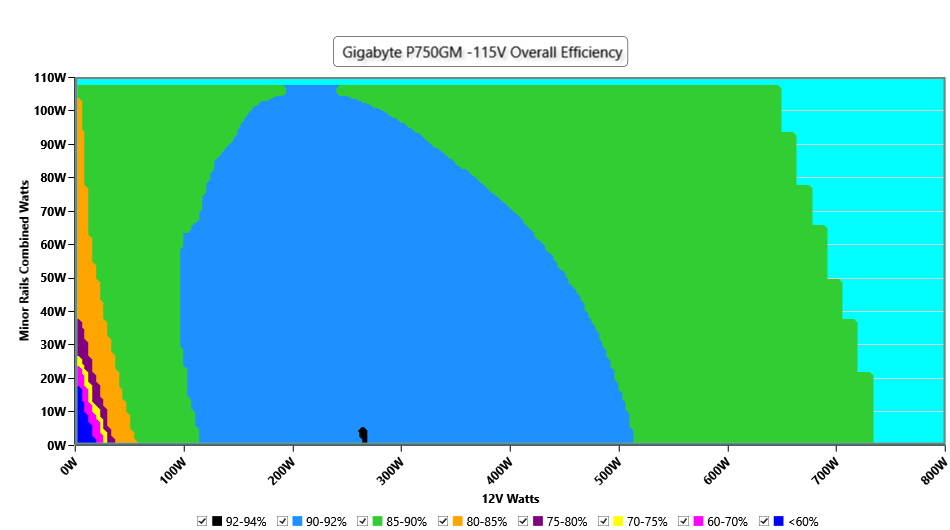Why you can trust Tom's Hardware
Protection Features
Check out our PSUs 101 article to learn more about PSU protection features.
| OCP (Cold @ 25°C) | 12V: 71.6A (117.38%), 11.955V 5V: 23.9A (119.5%), 5.147V 3.3V: 23.9A (119.5%), 3.369V 5VSB: 4.4A (146.67%), 4.896V |
| OCP (Hot @ 44°C) | 12V: 71.4A (117.05%), 11.972V 5V: 22A (110%), 5.146V 3.3V: 21.9A (109.5%), 3.373V 5VSB: 4.4A (146.67%), 4.926V |
| OPP (Cold @ 25°C) | 856W (116.94%) |
| OPP (Hot @ 38°C) | 869.52W (115.94%) |
| OTP | ✓ (186°C @ secondary side) |
| SCP | 12V to Earth: ✓ 5V to Earth: ✓ 3.3V to Earth: ✓ 5VSB to Earth: ✓ -12V to Earth: ✓ |
| PWR_OK | Accurate but lower than 16ms |
| NLO | ✓ |
| SIP | Surge: MOV Inrush: NTC Thermistor & Bypass relay |
The OPP and OCP triggering points are low, effectively protecting the unit from blowing. MEIC made the necessary changes on the PCB to make the PSU safer to use.
DC Power Sequencing
According to Intel’s most recent Power Supply Design Guide (revision 1.4), the +12V and 5V outputs must be equal to or greater than the 3.3V rail at all times. Unfortunately, Intel doesn't mention why it is so important to always keep the 3.3V rail's voltage lower than the levels of the other two outputs.
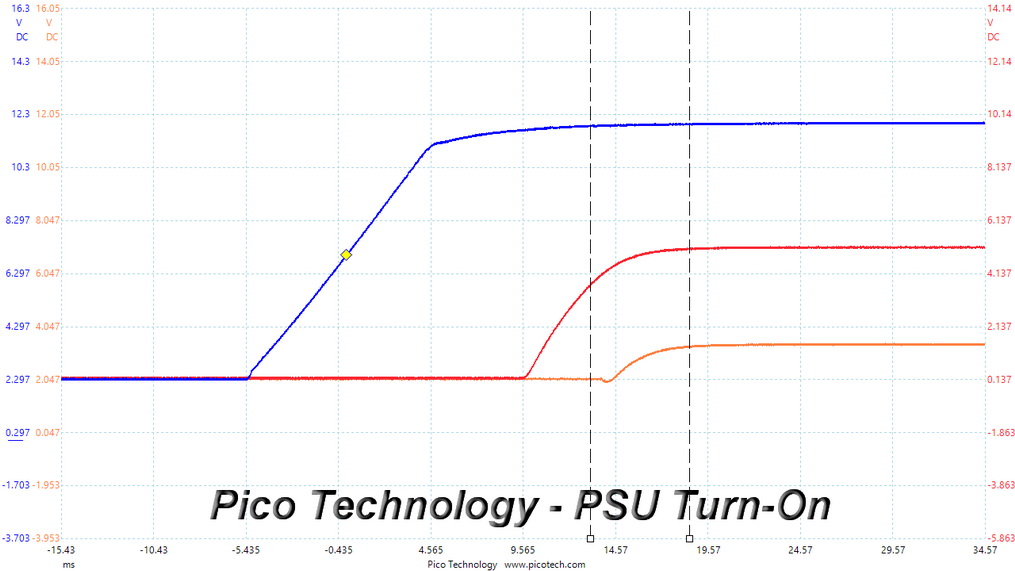

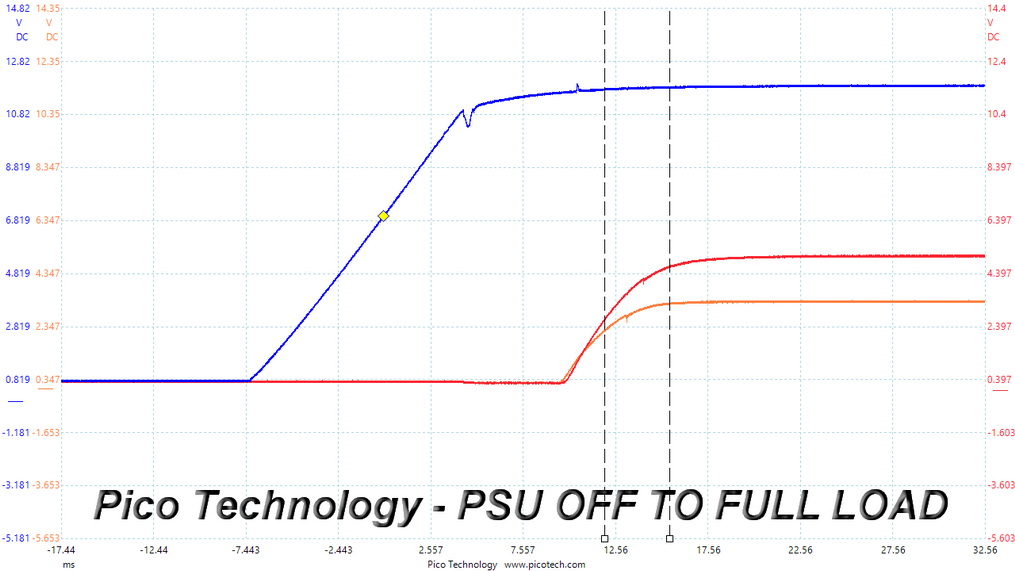
In the "PSU OFF To Full Load" test for a short period, the 3.3V rail exceeds the voltage level of the 5V rail. We are more worried, though, about the drop at 12V, near the top of its rise.
Cross Load Tests
To generate the following charts, we set our loaders to auto mode through custom-made software before trying more than 25,000 possible load combinations with the +12V, 5V, and 3.3V rails. The deviations in each of the charts below are calculated by taking the nominal values of the rails (12V, 5V, and 3.3V) as point zero. The ambient temperature during testing was between 30 to 32 degrees Celsius (86 to 89.6 degrees Fahrenheit).
Load Regulation Charts
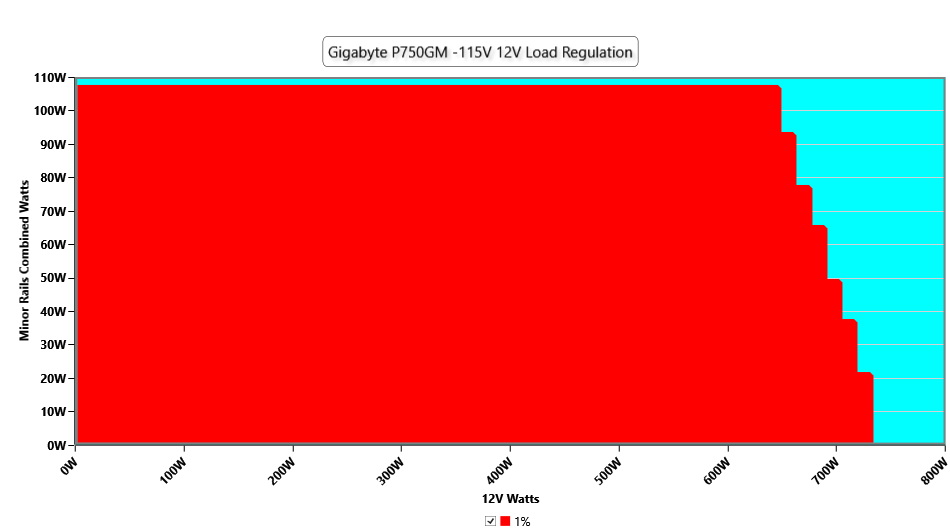



Efficiency Graph
Ripple Graphs
The lower the power supply's ripple, the more stable the system will be and less stress will also be applied to its components.
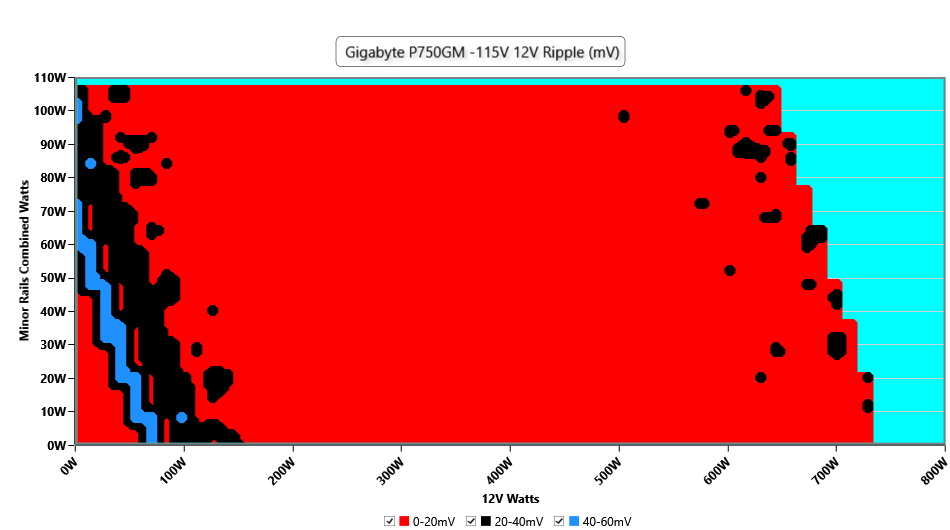

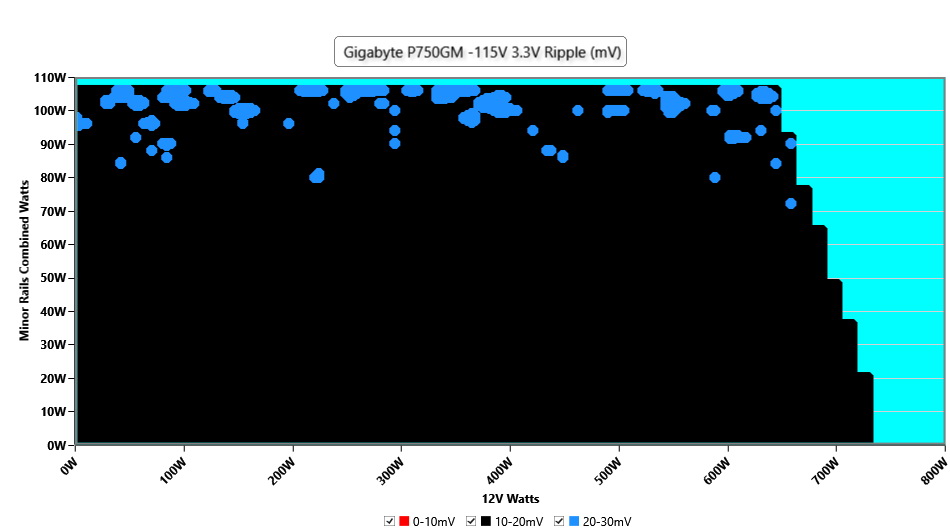
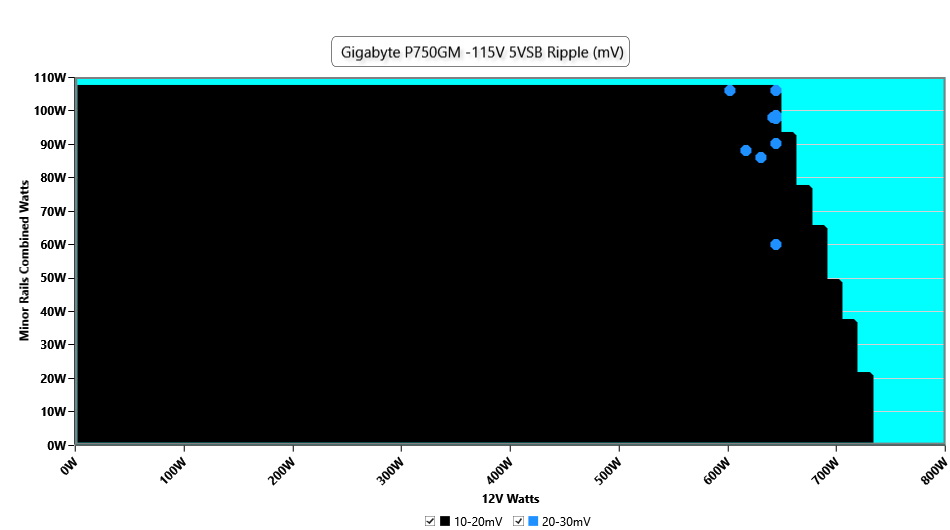
Infrared Images
We apply a half-load for 10 minutes with the PSU's top cover and cooling fan removed before taking photos with a modified Fluke Ti480 PRO camera able to deliver an IR resolution of 640x480 (307,200 pixels).
Get Tom's Hardware's best news and in-depth reviews, straight to your inbox.
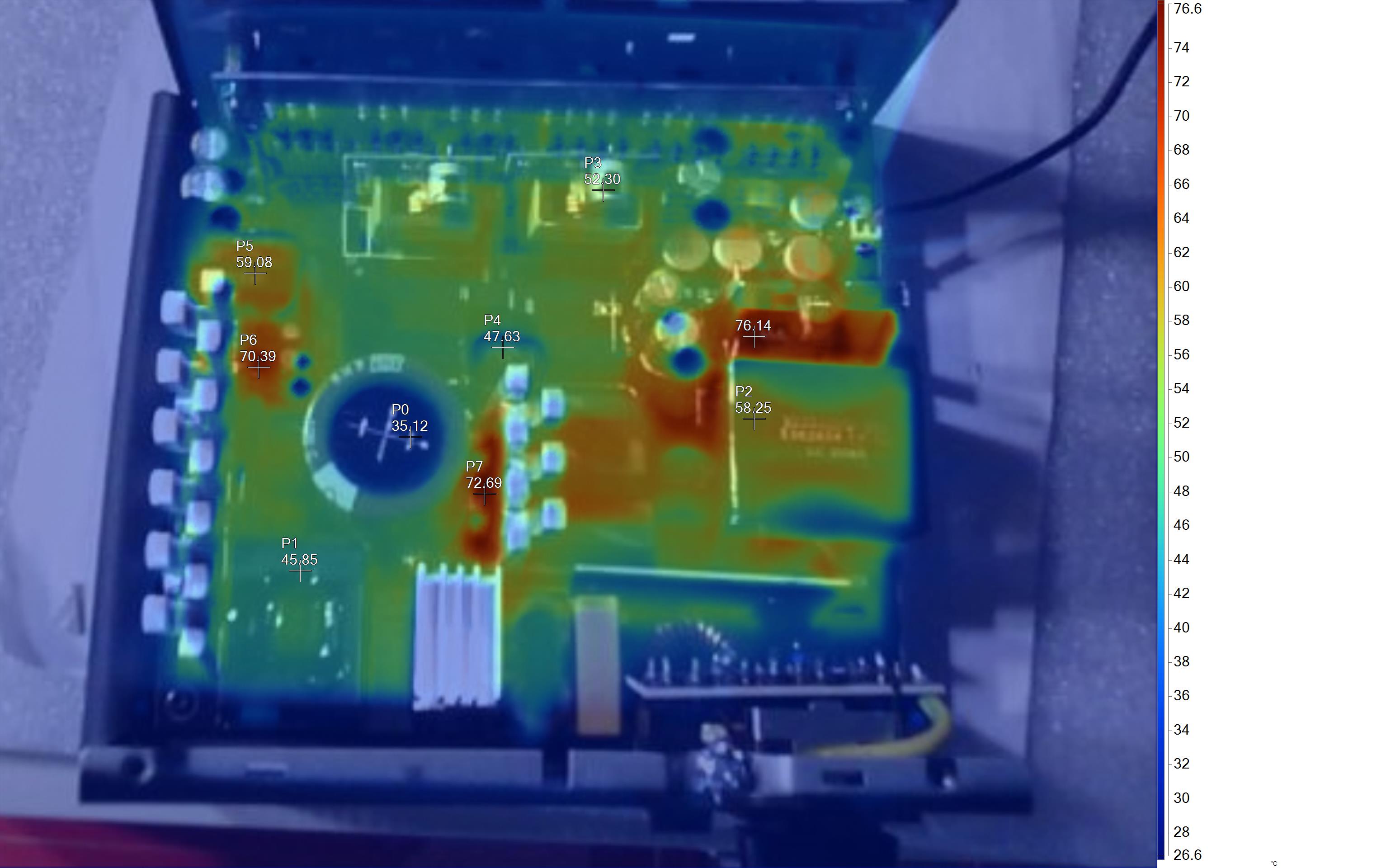
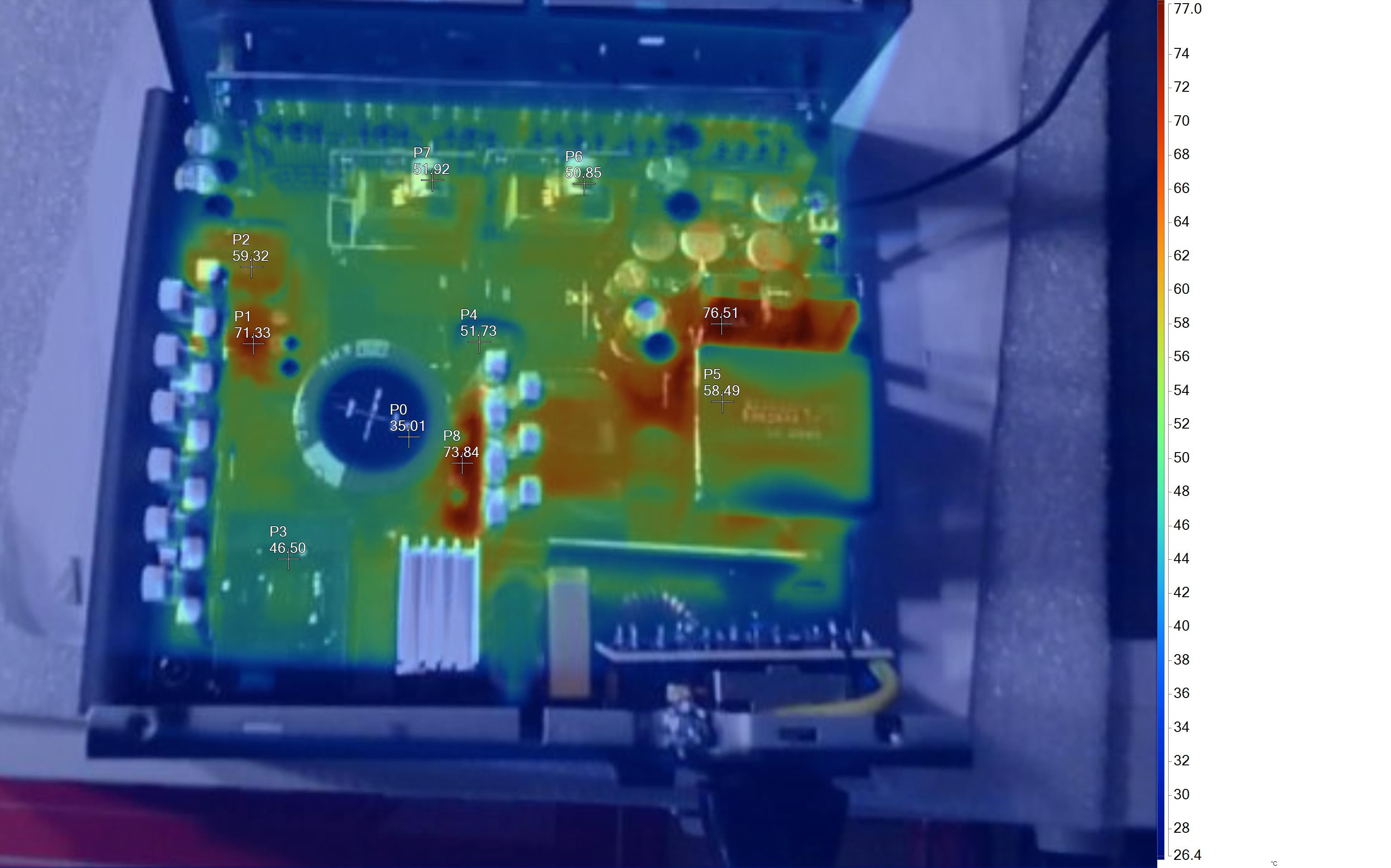
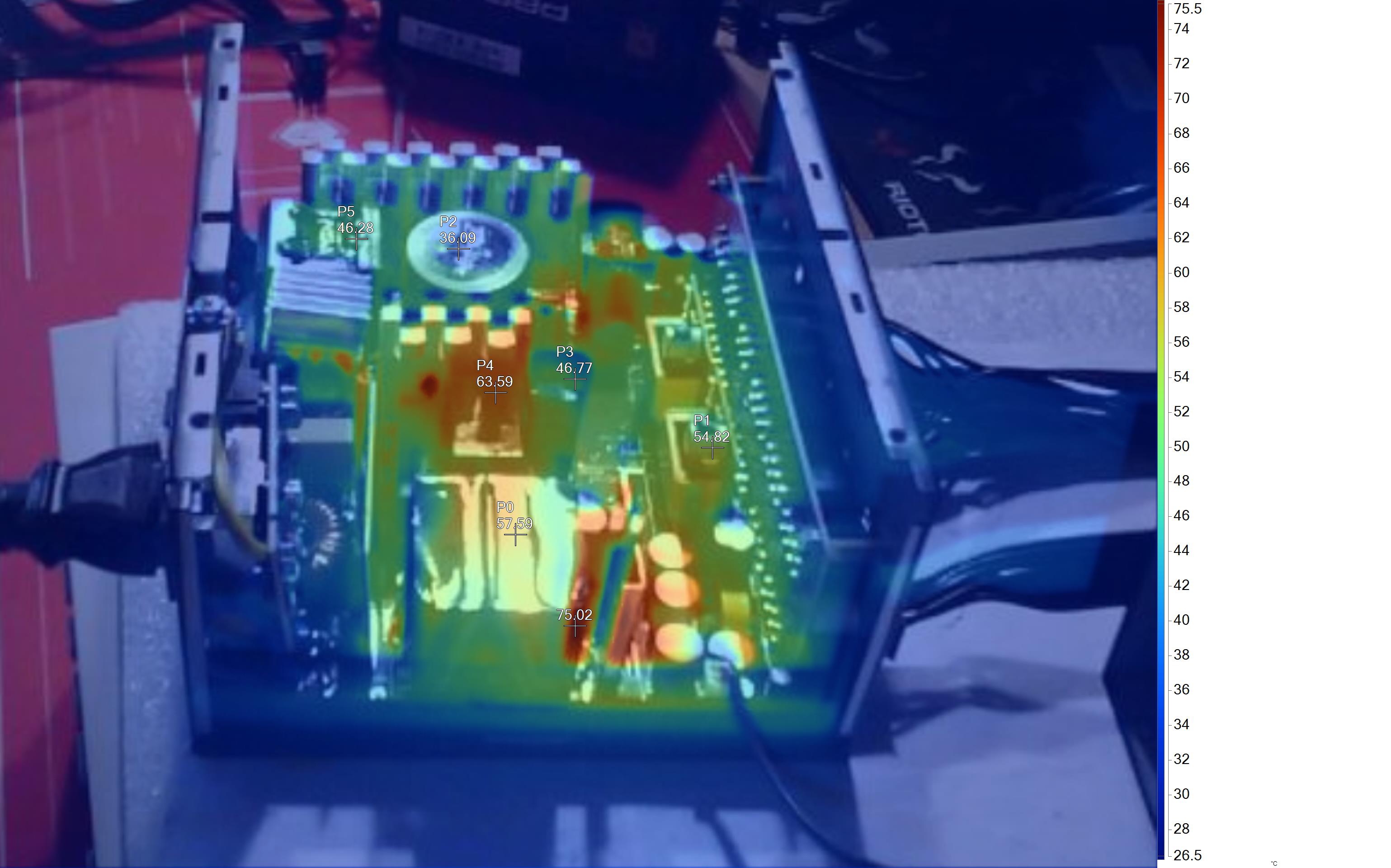
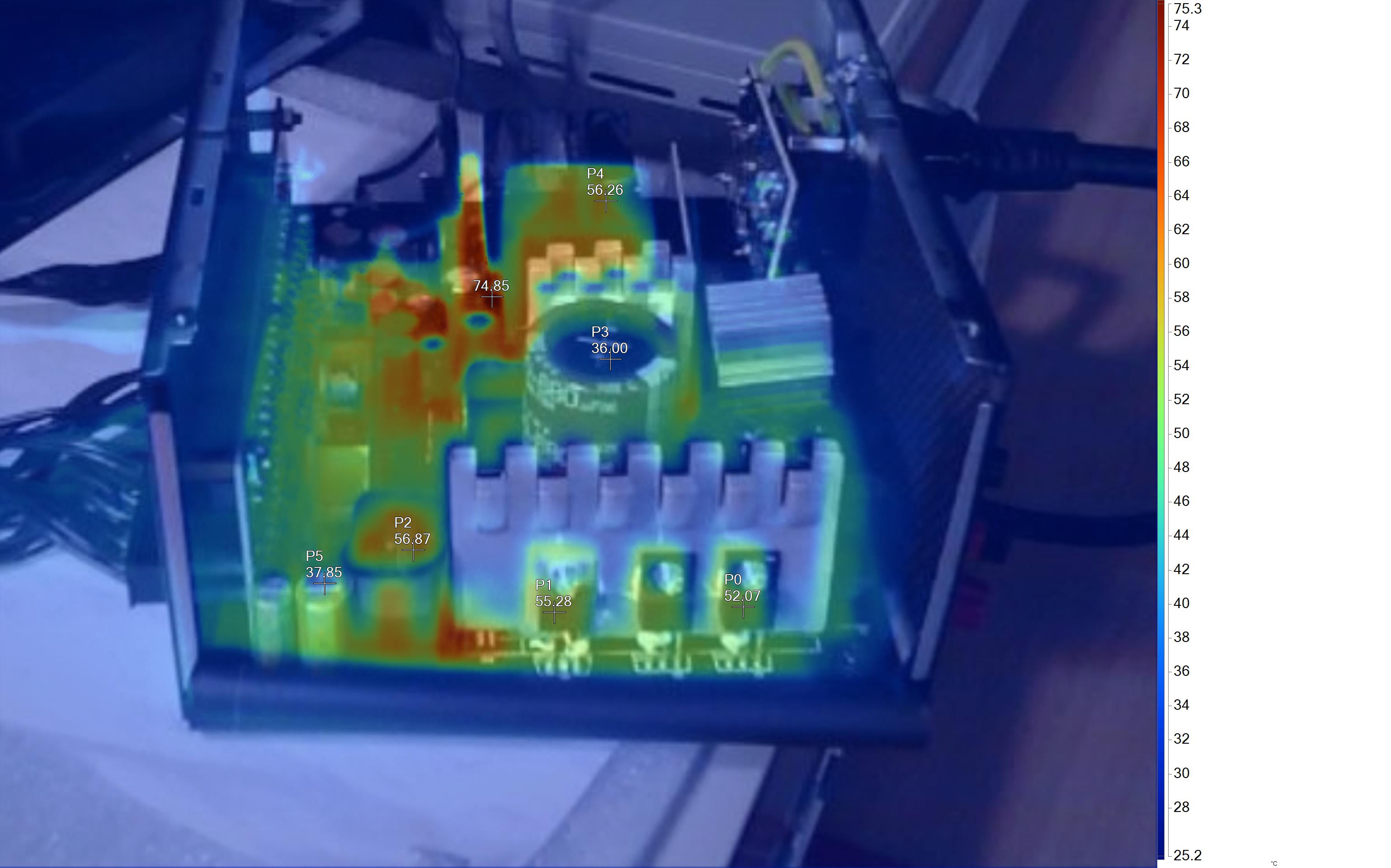
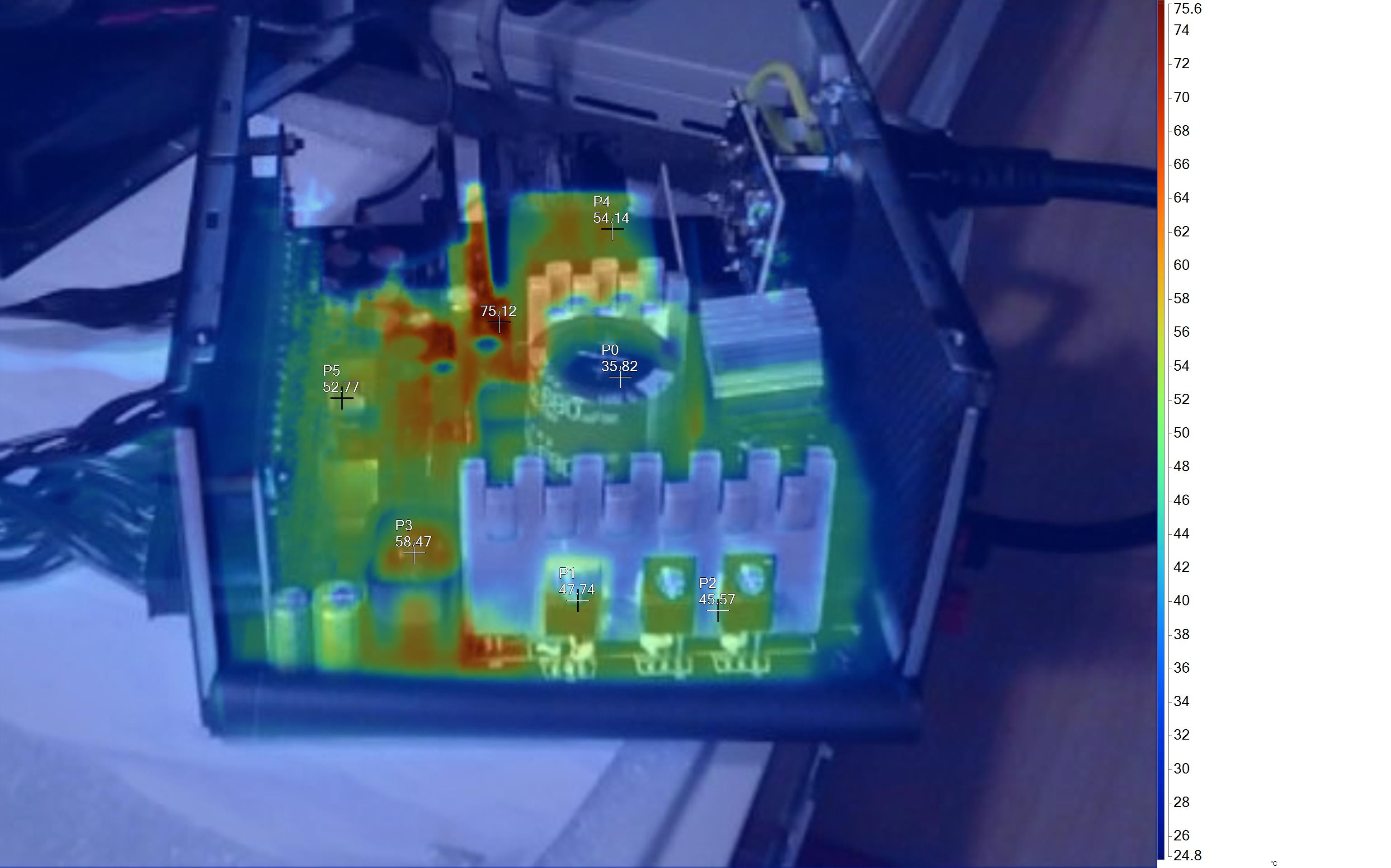
The temperatures are low. The hottest parts are the 12V heat sinks.
MORE: Best Power Supplies
MORE: How We Test Power Supplies
MORE: All Power Supply Content
Current page: Protection Features, DC Power Sequencing, Cross-Load Tests and Infrared Images
Prev Page Load Regulation, Hold-Up Time, Inrush & Leakage Current, Efficiency and Noise Next Page Transient Response Tests, Timing Tests, Ripple Measurements and EMC Pre-Compliance Testing
Aris Mpitziopoulos is a contributing editor at Tom's Hardware, covering PSUs.
-
helper800 The title should have been; Gigabyte PSU Review: Lacking any Explosive Features, Good or Bad.Reply -
watzupken I don't know man. Once beaten, twice shy. Even with the fixes, this is not a PSU that I will use or recommend. To me, the worst part is how Gigabyte tried to shrug off responsibility for the explosive PSU that are potential fire hazard, and put off fixing the shortcomings of the PSU for almost a year.Reply -
NightHawkRMX Reply
The explosive p-gm is discontinued. It has been replaced by the UD series which are "fixed" allegedly.Pc amature said:How do I know difference between new model and old model
